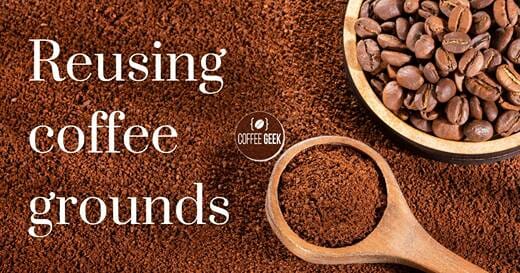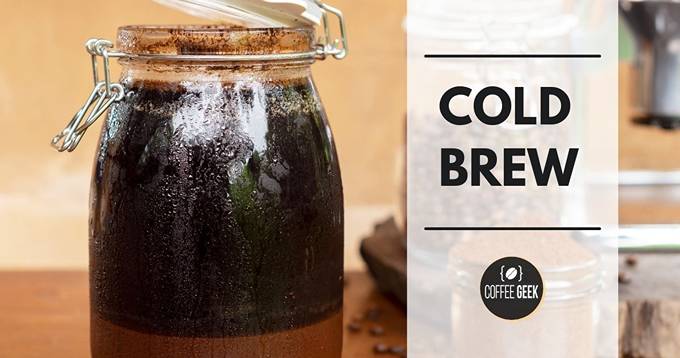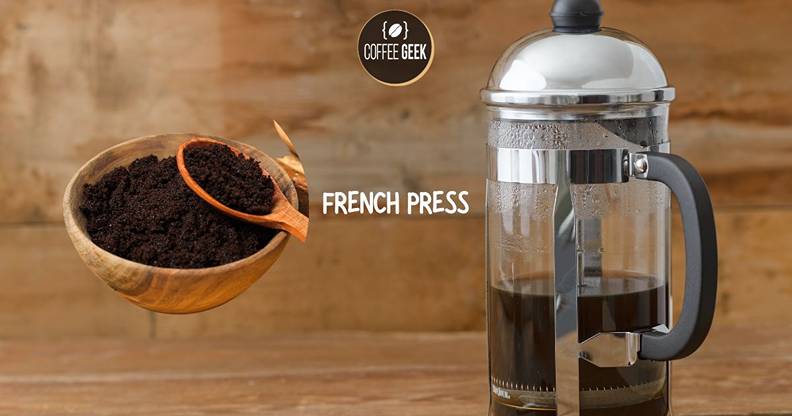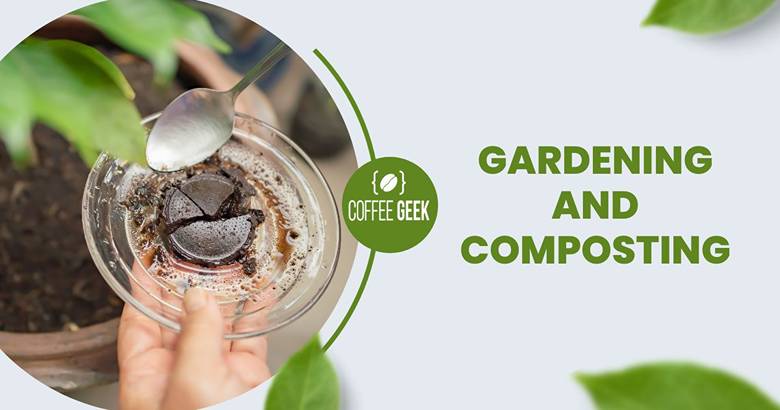Many coffee lovers have wondered if they can stretch their coffee grounds a little further, especially when trying to save on expenses or minimize waste. How many times can you use coffee grounds?
Reusing coffee grounds is a topic of debate among coffee enthusiasts, with opinions regarding the effects on flavor and quality varying significantly.
This article explores the intricacies of reusing coffee grounds, including the factors that influence the quality of your cup of Joe.
Understanding the extraction process and the impact of different brewing techniques is crucial when considering the possibility of using coffee grounds more than once.

Coffee’s flavor profile is largely derived from the intricate balance of acids, sugars, and oils that are extracted during the brewing process.
Consequently, it’s critical to assess the pros and cons of reusing grounds, as well as explore alternative uses for spent coffee grounds outside the coffee brewing realm.
Key Takeaways
Reusing old coffee grounds is a debated topic with varying opinions on its impact on flavor and quality.
Understanding the extraction process and different brewing techniques is crucial when considering reusing grounds.
Exploring alternative uses for spent coffee grounds can provide environmentally friendly and practical solutions.
Reuse Coffee Grounds: An Overview
Coffee is a daily ritual for many people, and a conversation about reusing coffee grounds might have crossed your mind.
Let’s dive into the world of reusing coffee beans, grounds and what you should know about coffee taste before giving it a try.
First things first: yes, you can reuse coffee grounds. However, the number of times you do so has a significant impact on the flavor of your brewed coffee.

The first cup of coffee, brewed coffee with grounds that are fresh will be the strongest and most flavorful. As you reuse the grounds, the flavor starts to weaken.
You can reuse them up to three times, but it’s essential to know that the taste and strength diminish with each use.
Now, let’s talk about the brewing process. When hot water comes into contact with coffee grounds, they “bloom,” releasing trapped gases and flavors from the coffee beans.

As you reuse coffee grounds from coffee beans, you’ll notice that the coffee doesn’t bloom as much, resulting in a weak brew with less aroma. If you’re a coffee connoisseur, you might not be a fan of reusing grounds.
But there’s good news! You don’t have to toss those used old coffee grounds right away. There are other ways to make the most of them.
For example, you can use them as a natural fertilizer for your plants, mix them into your compost, or even use them as an exfoliating scrub.
So while it’s not ideal to reuse coffee grounds for your daily cup, they still have other exciting purposes around your home.

In the end, the decision is yours. If you’re in a pinch and need a cup of coffee, feel free to reuse the grounds. Just be prepared for a less robust flavor.
Don’t forget to repurpose those grounds in other ways once their brewing days are done. Your plants and compost will thank you for it.
Pros and Cons of Reusing Coffee Grounds
Flavor Implications
Reusing grounds has its pros and cons when it comes to flavor. On the positive side, you can brew up to three times before the taste starts getting significantly weaker.
The first brew will give you the boldest flavor, while the third will be noticeably on the weaker side. However, by the fourth round, you should consider using a fresh batch of coffee grounds.
On the flip side, reusing grounds might result in a bitter taste. The reason is that brewing extracts the delicate oils and flavorful compounds from the coffee grounds.
When you reuse them, you may not have enough of these compounds left to create a pleasant, well-rounded flavor.

Effects on Caffeine Content
Reusing grounds has a noticeable effect on caffeine content. Generally, your first brew extracts most of the caffeine from the grounds.
When you reuse the spent grounds, expect a much lower caffeine level in each subsequent brew.
This reduction in caffeine content might work to your advantage if you’re trying to lower your caffeine intake. However, if you need that extra caffeine kick, reusing grounds may not be the best option for you.
So, when deciding whether to reuse coffee grounds or not, consider your preferences for taste and caffeine content.
Some people may enjoy the weaker, less intense flavors and the reduced caffeine effects, while others may prefer to start each brewing session with fresh grounds.
| Purpose | Number of Uses | Notes |
|---|---|---|
| Brewing Coffee | 1 | Fresh grounds are typically used for brewing. |
| Cold Brew Coffee | 1 | Grounds can be reused for a weaker brew. |
| Espresso | 1 | Fresh, finely-ground coffee is essential. |
| Drip Coffee (Traditional) | 1 | Fresh grounds are recommended for best flavor. |
| French Press | 1-2 | Can be reused for a second, weaker brew. |
| Pour-Over | 1-2 | Can be reused for a second, weaker brew. |
| AeroPress | 1-2 | Can be reused for a second, weaker brew. |
| Espresso Machine (Pods) | 1 | Pods are designed for single use. |
| Espresso Machine (Manual) | 1 | Fresh, finely-ground coffee is necessary. |
| Gardening | 1 | Used grounds can be added to compost. |
| Odor Removal | 1 | Grounds can absorb and neutralize odors. |
| Cleaning | 1 | Abrasive texture makes them useful for scrubbing. |
The Extraction Process
The extraction process plays a crucial role in determining the taste and quality of your coffee. Whether you prefer espresso, French press, or pour-over, understanding how extraction works can help you brew a better cup of coffee.
Factors Affecting Extraction
There are several factors that affect the extraction process, which we’ll go through in a casual tone and second person point of view:
Grind size: The size of your coffee grounds impacts the extraction process. Finer grounds, such as those used for espresso, expose more surface area and lead to faster extraction.
Coarser grounds, like the ones used for French press, require more time to extract the flavors.
Brewing method: Different brewing methods, like espresso, French press, and pour-over, have unique extraction processes.
Espresso machines use high pressure to force hot water through the coffee grounds, leading to a more concentrated and quicker extraction.
In contrast, French press and pour-over methods involve steeping or dripping water through the grounds, resulting in a slower extraction.
Water temperature: The temperature of the water you use plays a significant role in extraction. Higher temperatures extract more flavor compounds quickly, while lower temperatures take longer.
Ideally, you should use water between 195°F and 205°F (90°C-96°C) to ensure optimal extraction.
Brew time: The length of time water is in contact with your coffee grounds also affects extraction.
Shorter brew times, like in espresso preparation, lead to a more intense flavor due to quicker extraction, whereas longer brew times in methods like French press produce a more complex and mellow flavor.
Remember to experiment with these factors to find the perfect balance for your taste buds. Enjoy your coffee journey and happy brewing!
Different Brewing Techniques
Cold Brew

When it comes to reusing grounds, the cold brew coffee method definitely gives you some leeway.
With this technique, you steep your coffee grounds in cold water for an extended period of time, usually for 12 to 24 hours.
Cold brewing extracts flavors from the coffee grounds more slowly, allowing for a less acidic and milder taste.
Since cold brew coffee extraction is slower, you may be able to reuse your grounds in the cold brew process without sacrificing too much flavor. J
ust remember, each time you reuse them, the brew will be slightly less aromatic and flavorful.
Pour Over Coffee

The pour-over method is known for its precise coffee flavor extraction process. Water is poured over coffee grounds in a controlled manner, allowing you to control the flow and extraction of oils and flavors.
Reusing the same coffee grounds for pour-over coffee is generally not recommended, as the delicate and intentional extraction process loses its essence with previously brewed grounds.
Your second brew with reused grounds will likely lack the same flavor and aroma as the initial cup, taking away from the pour-over coffee experience.
French Press

The French Press method is an immersion brewing technique where ground coffee steeps directly in water, then gets separated by a plunger and metal filter.
French Press extraction is known for its robust and full-bodied flavor. When considering reusing the same coffee grounds in this method, it’s essential to keep in mind that the second brew will be noticeably weaker.
Since the French Press relies on the coffee grounds being in contact with water for a relatively long time, most flavors will be already extracted in the first brew.
Using previously brewed grounds would result in a less flavorful and less aromatic cup of coffee, not truly capturing the essence of the French Press method.
Alternative Uses for Coffee Grounds – How Many Times Can You Use Coffee Grounds?
Gardening and Composting

Have you ever thought of using your used coffee grounds in the garden? Coffee grounds are rich in nutrients such as nitrogen, potassium, iron, and magnesium.
These nutrients are great for plants and adding coffee grounds to your soil is actually an excellent fertilizer. Plus, the grounds can help deter pests like snails, beetles, and fruit flies.
Composting is another great way to utilize those used coffee grounds. They are rich in nitrogen which is essential for the decomposition process in your compost pile.
By adding coffee grounds to your compost, you’re also contributing valuable minerals like calcium, phosphorus, and chromium.
Beauty and Skincare

Would you believe that coffee grounds can be used for beauty and skincare too? The texture of coffee grounds makes them a wonderful exfoliant.
Using a simple mixture of old coffee grounds and a bit of olive oil can help remove dead skin cells, improve blood flow, and leave your skin glowing.
You can also incorporate used coffee grounds into a homemade body scrub. This can be a great way to make effective and eco-friendly skincare products without spending a fortune.
Household Tips

Coffee grounds have a variety of household uses too. You can use them as a deodorizer by placing a small dish of reused coffee grounds in your fridge or other odorous areas.
The grounds will help absorb unpleasant smells and keep your home smelling fresh.
Did you know that coffee grounds can be used as a furniture polish? Mix some old grounds with a bit of water and a few drops of your favorite essential oil to create a natural, eco-friendly polish that’ll make your wood furniture shine.
Lastly, coffee grounds can even act as a flea repellant. If you have a furry friend at home, try rubbing some used coffee grounds onto their fur as a natural alternative to chemical flea treatments.
Now you know several ways to repurpose your used coffee grounds, so don’t simply throw them away. Give them a new life, save some money, and be kinder to the environment.
Conclusion
In the end, while reusing grounds might seem like a tempting way to save money, the overall quality of your coffee will suffer. When you brew coffee with fresh grounds, the flavorful oils and compounds are extracted, giving you the best taste possible.
But when you attempt to reuse the grounds, you’ll likely end up with a weak, unappealing brew that is far from satisfying.
In some cases, reusing same coffee grounds could be an acceptable option when you find yourself in a pinch, but it’s not recommended for those who truly appreciate the full flavor and aroma that comes with a freshly brewed cuppa.
So, instead of trying to stretch your used grounds further, focus on ways to make the most out of your fresh coffee grounds.
Keep in mind that reusing coffee grounds doesn’t mean you have to waste them. There are actually many alternative uses for spent grounds, such as composting, gardening, and even DIY beauty treatments.
By finding creative ways to repurpose used grounds, you’re not only helping the environment but also making the most of your coffee experience.
Remember, the key to enjoying a great cup of coffee is starting with fresh grounds every time. By doing so, you’ll ensure the best possible flavor, aroma, and overall experience.
So go ahead and treat yourself to that top-notch cup of coffee you deserve by always keeping a supply of fresh grounds on hand.
Frequently Asked Questions
Can you reuse the same coffee grounds in a coffee maker?
Yes, you can technically reuse grounds in a coffee maker, but it is not recommended as the flavor will be weaker and less satisfying. As seen in this article on reusing grounds, it’s possible to use coffee grounds twice if you absolutely need to, but the flavor and quality will be compromised.
How often to reuse grounds for cold brew?
For cold brew, it’s not ideal to reuse grounds, as the first batch extracts the majority of flavor and strength. If you still decide to reuse the grounds, only do so once to achieve a weaker but still drinkable cold brew.
Using grounds twice in a French press?
If you’re using a French press, reusing grounds is not recommended. The flavor and strength will be significantly reduced in the second brew. It’s always better to use fresh grounds for a more robust and delicious cup.
Reusing espresso grounds: good idea?
Reusing espresso grounds is not a good idea, as the extraction process and pressure involved in making espresso remove most of the flavor compounds and oils in the first go. According to this article on using coffee grounds twice, experts recommend against reusing espresso grounds to ensure a full and rich flavor in your espresso.
Reusing grounds for plants: how often?
Reusing grounds for plants can be beneficial, as the grounds serve as a good source of nutrients. Feel free to use your spent coffee grounds for gardening purposes as often as you’d like, just be cautious about overdoing it, as too much coffee grounds can be harmful to your plants.
Does reusing grounds lower caffeine?
Yes, reusing grounds will lower the caffeine content. Caffeine is mostly extracted during the initial brewing process, so subsequent brews with the same grounds will result in weaker coffee with less caffeine.

